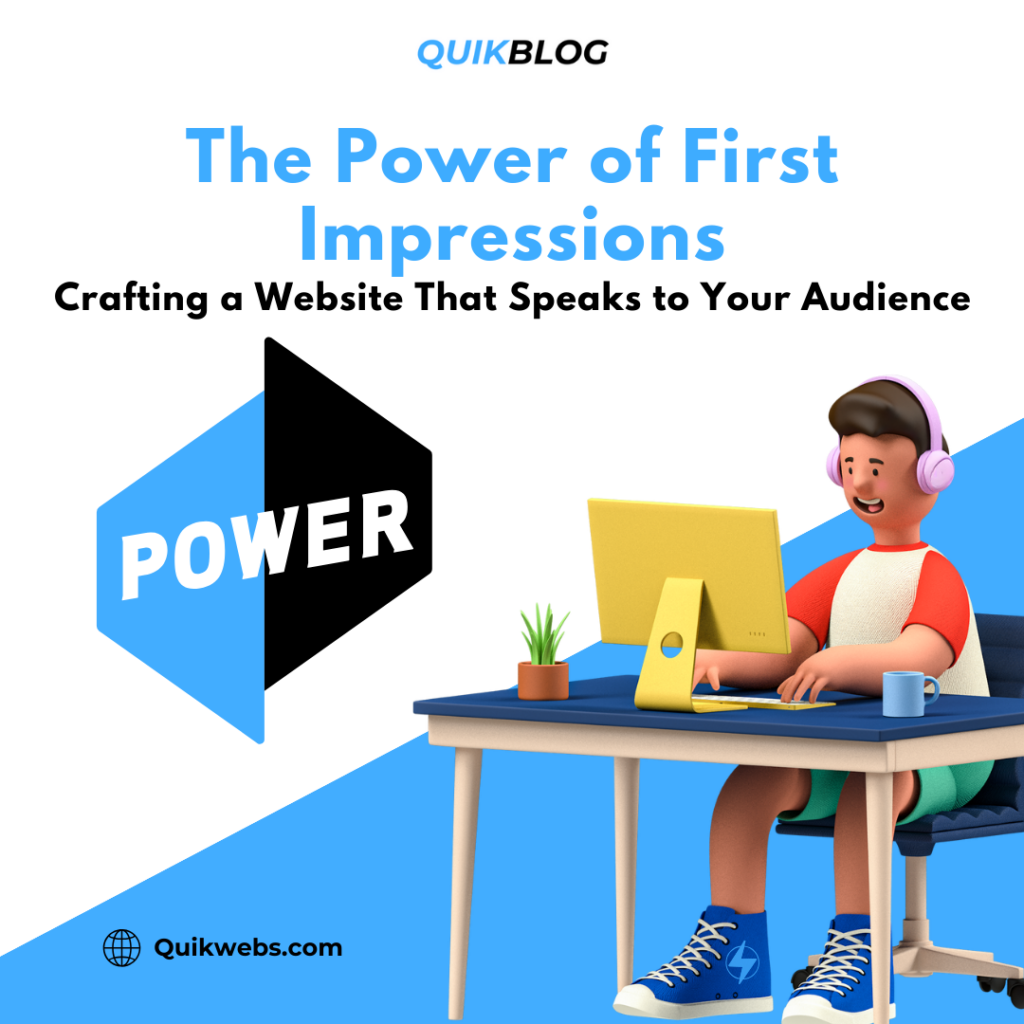
In the digital realm, where attention spans are fleeting and choices abound, the significance of a first impression cannot be overstated. Your website is often the initial point of contact between your brand and potential visitors. The impressions formed in those crucial first moments can influence user engagement, build trust, and shape the overall perception of your brand. In this exploration, we’ll delve into the psychology of first impressions and unravel the strategies for crafting a website that not only captures attention but resonates with your audience.
Understanding the Psychology of First Impressions
First impressions are formed rapidly, often within a matter of seconds. Visitors to your website make snap judgments based on visual elements, usability, and overall aesthetics. These judgments are not purely subjective; they are influenced by a combination of design principles, user expectations, and psychological factors. Understanding this psychology is the first step toward creating a website that makes a positive impact.
Visual Appeal: A Gateway to Engagement
The visual aesthetics of your website play a pivotal role in shaping the initial impression. A clean and visually appealing design not only captures attention but also communicates a sense of professionalism and credibility. Strategic use of colors, fonts, and imagery contributes to the overall visual appeal, setting the tone for the user’s experience. The goal is to create a harmonious and inviting visual environment that aligns with your brand identity and resonates with your target audience.
User-Friendly Navigation: Guiding the Journey
A user-friendly and intuitive navigation system is fundamental to a positive first impression. Visitors should be able to navigate through your website effortlessly, finding the information they seek without frustration. Clear and logically organized menus, accompanied by strategic calls-to-action, guide users on a seamless journey through your content. By minimizing the cognitive effort required for navigation, you enhance the overall user experience and contribute to a favorable first impression.
Compelling Content: Capturing Interest
Beyond aesthetics, the content on your website is a key determinant of the first impression. Engaging and relevant content captivates visitors, providing value and meeting their expectations. Concise and well-crafted headlines, compelling storytelling, and strategically placed visuals contribute to a positive content experience. The goal is to communicate your brand’s message clearly and persuasively, leaving a lasting impact on your audience.
Mobile Responsiveness: Adapting to Diverse Audiences
In an era dominated by mobile devices, ensuring that your website is mobile-responsive is crucial for creating positive first impressions. A seamless and consistent experience across various devices communicates a commitment to accessibility and user-centric design. Responsive websites not only cater to the preferences of mobile users but also project a forward-thinking and adaptable brand image.
Loading Speed: Patience is a Virtue
In the digital age, where speed is of the essence, the loading speed of your website significantly influences first impressions. Slow-loading pages can lead to frustration and prompt users to abandon your site. Optimizing loading times through techniques such as image compression, browser caching, and efficient server response contributes to a positive user experience from the outset.
Building Trust: The Foundation of Positive Impressions
Trust is a cornerstone of positive first impressions. Visitors should feel confident in the reliability and authenticity of your website. Elements such as clear contact information, security certifications, and transparent business practices contribute to building trust. By establishing credibility early on, you pave the way for a positive and enduring relationship with your audience.
Consistent Branding: Creating a Cohesive Identity
Consistency in branding is vital for creating a cohesive and memorable first impression. From the logo and color palette to the tone of voice, maintaining a unified brand identity across your website fosters recognition and reinforces brand recall. A consistent brand presence enhances professionalism and reinforces the reliability of your brand in the eyes of visitors.
Iterative Design: Adapting for Ongoing Success
Creating a website that makes a lasting impression is an ongoing process. Adopting an iterative design approach based on user feedback, analytics, and evolving trends allows you to adapt and refine your website continually. Staying attuned to the changing needs and preferences of your audience ensures that your website remains relevant and effective in leaving positive first impressions.
Conclusion: Crafting Experiences, Leaving Impressions
In the digital landscape, where choices are abundant, crafting a website that speaks to your audience requires a thoughtful blend of design, psychology, and user-centric principles. The power of first impressions is not just about aesthetics; it’s about creating meaningful experiences that resonate with visitors and set the stage for lasting connections. By prioritizing visual appeal, user-friendly navigation, compelling content, and trust-building elements, you can ensure that your website leaves a positive and indelible first impression, inviting visitors to explore, engage, and connect with your brand. In the realm of digital experiences, the art of crafting a website that speaks to your audience begins with that crucial first impression.
Ready to work with us?
Whether you’re a startup looking to make your mark or an established business in need of a digital revamp, we’re ready to collaborate and create something remarkable together.